Marc Lawrence, James Flavin and Barry Kelley looked like characters out of central casting, and that’s exactly where they came from. They were among film noir’s most prolific character actors.
Marc Lawrence got the call whenever a gangster or thugs was needed. In a career that spanned 70 years Lawrence appeared in 181 films, usually as a hoodlum of some sort. While most of his roles were small, he certainly had the ability to play more substantial parts. The best of these would be in The Asphalt Jungle where he played Cobby, the smalltime bookie and fixer. Lawrence even appeared in two James Bond films as what else but a gangster.
What Lawrence was to gangster roles, Flavin was to cop roles. Flavin appeared in 384 feature films, invariably as a cop, be it uniform or detective. Like Lawrence, most of Flavin's parts were small, but he too could carry himself in more substantial roles. Such was the case in his co-
While he did not appear as often as Lawrence or Flavin, Barry Kelley was certainly film noir’s most versatile character actor. Kelley played judges, crooks. prosecutors, politicians, shyster lawyers and cops -
Every genre has its definitive actors, those who are associated by their image or simply the number of films in which they appear. In that regard, film noir is not much different. Humphrey Bogart, Robert Mitchum, Glenn Ford and Robert Ryan easily come to mind when discussing film noir. Not only did each have a lengthy resume in noir, they also developed the unique persona of the genre. But there are plenty of contradictions and misconceptions. For instance, James Cagney’s name may resonate film noir but his limited involvement in the genre suggest otherwise. He was one of Warner Bros. gangsters during the 30s and certainly played his share of violent characters in the dark dramas of that era. But by he time film noir came around in the 40s the versatile Cagney had moved on to comedy, musicals and even westerns. He only made two real noirs, 1949s White Heat and Kiss Tomorrow Goodbye the fallowing year. Those films are both good and Cagney is true to his former gangster persona, but that’s the extent of his noir work. So it would be a stretch to say he had a notable presence in film noir. The same could be said of Bette Davis. Even though she was one the big screen’s most manipulative women, her roles in film noir were limited to a few marginal films.
On the other hand, Robert Taylor is probably the most overlooked actor in film noir. Primarily known for his roles in romantic dramas, he was one of MGM’s leading men of the 40’s and early 50s staring in many of their big budget productions like Ivenhoe , Quo Vadis. and Valley of The Kings. Even though MGM was a studio that lagged in film noir, Taylor was the actor they went to when the studio did venture in the genre. He appeared in a half dozen noirs and though his performances were usually generic he did leave a film noir legacy. One unique aspect of film noir is that it encompassed a defined period of time in which the evolution of the genre and that of the actors who took part can readily be traced.

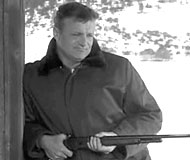
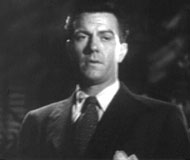


Four All-
For actresses, film noir offered limited roles. Playing a strong women in noir usually meant you were a femme fatale or worse yet, a murderer. Against that would be the dames, broads and just plain losers. On the other hand there was no prerequisite for beauty in noir roles as this was a genre about hard reality and for the most part devoid of glamour. You are more apt to find beauty in the bimbo girlfriends of mobsters than anywhere else in noir. Howard Hughes put Jane Russell in three noirs when he owned RKO. The films are good, but not because of Russell who was nothing more than eye candy. On the other hand, a very plain looking Cathy O’Donnell had featured roles in six noirs. She played the type of women you would expect to find in real life noir circumstances.
Still, there were opportunities for beauties like Rita Hayworth and Ava Gardner to have substantial roles. But for the most part it was rather average looking women like Nina Foch, Gloria Graham, Evelyn Keyes, and Audrey Totter that defined noir. They had a sultry allure that proclaimed their vulnerability -
The women who chose to play in film noir were able to make their mark even if there was a lack of peer recognition. Playing a femme fatale in noir provided an opportunity to make an impression that resonated with audiences. Even though she had been long forgotten, Ann Savage’s obituary was widely reported because of the impact she made with her performance as a femme fatale in Detour. Similarly Jane Greer left an indelible screen image as Kathie Moffat in Out Of The Past notwithstanding an otherwise undistinguished career. Barbara Stanwyck was one of the only top actresses who played in noir for most of its duration and was credible. Joan Crawford won an Academy Award for her performance in Mildred Pierce (a marginal noir) but miscast in later film noir roles. And Betty Davis, the tough dame you would expect to be perfect for film noir was a no show in the genre.




What film noir lacked in star power it made up with a roster of character actors. Few people would recognize them by name but the bit parts and occasionally featured roles they played were a crucial element in creating the the atmosphere that was unique to film noir. The reoccurring appearance of so many gives the impression of a repertory company at work but it was an aspect that contributed to defining the genre. They tended to play specific types, be it cops, gangsters or any other character germane to the story. By the late 50s as film noir faded, most of these actors found steady work in television while many former “A” list actors retired or pursued other careers.




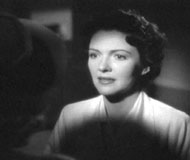

As the studio system was changing in the 1950s, actors who no longer were considered stars found work in film noir. These actresses who had been leading ladies in comedies and musicals of the 30s and 40s now found themselves in the unglamorous world of noir.


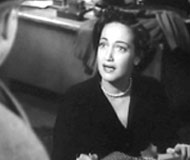
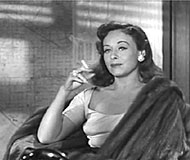
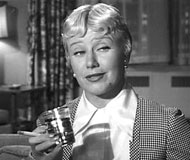





A number of actors who appeared in film noir became well known for other things. Lucille Ball became an icon of comedy but in the Dark Corner she was deadly serious. Nancy Davis became Mrs. Ronald Reagan and First Lady. Jack Lord, Lorne Greene and Angela Lansbury each played killers in film noir but went on to star on television in three of that medium’s most popular shows ever. Doris Day, Marilyn Monroe and Yul Brynner became major film stars.





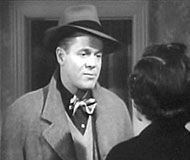
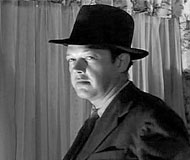




A heartless, evil person is usually at the heart of every noir story. While there was ample violence dished out by assorted thugs and henchmen, the heavies in noir would just as likely be a scoundrel, blackmailer or other sleazy type. And don’t forget females could be just as deadly in noir without every pulling a trigger. Certain actors became adept at playing people you love to hate. Unlike today's films where the degree of violence defines the villain, in noir it was more sophisticated. While Raymond Burr was noir’s most prolific and violent villain, other heavies dished out their share of beatings. But violence wasn’t the only means of getting what you wanted in noir. Extortion, double-


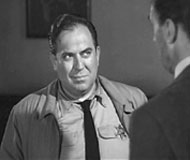
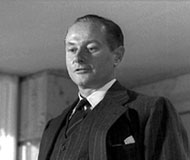



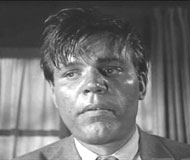



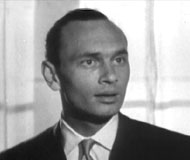

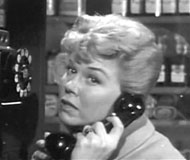

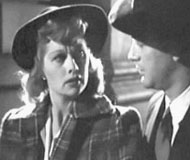
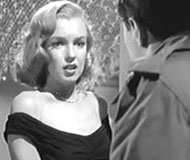






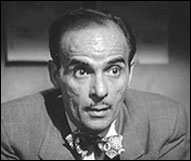
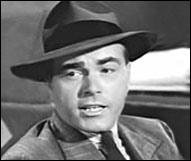






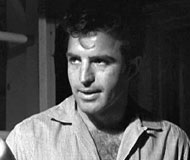
Jack Web and Vince Edwards each played serious bad guys in film noir. Yet they went on to star in popular television shows playing esteemed characters. In a bit of irony, Webb murdered his future Dragnet partner, Harry Morgan in 1951’s Appointment With Danger. Before saving lives as Doctor Ben Casey, Edwards was taking them, playing vicious killers in three noirs.





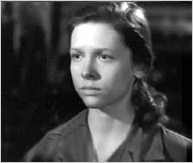




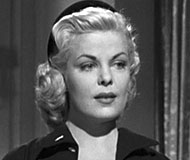



During the early years of film noir the studio system was in place. As such, the actors who played in them were usually known commodities drawn from the studio’s contract roles. But it was also a time when film noir played a defining role in the careers of many fledgling actors. It’s remarkable the number of actors whose careers were launched in film noir and went on to became major film stars. The first Hollywood film appearances of Burt Lancaster, Kirk Douglas, Richard Widmark, Yul Brynner and Charlton Heston were in film noir. Glenn Ford, Ava Gardner, Alan Ladd and Rita Hayworth had breakthrough roles in film noir after struggling in Hollywood. For Hayworth and Ford it would come in the noir, Gilda. Fred MacMurray, ostensibly known for romantic comedies, was salient playing dark characters in multiple noirs. Lancaster, Douglas and Heston would come to define the virile leading men of their generation but in film noir they portrayed rather weak individuals, easily influenced by women. Such are the nuances you find in the genre.
Of course an actor’s studio affiliation had much to do with their exposure to film noir. But that tended to change by the early 1950s as the contract system was ending. Film noir became increasingly the province of low budget B-

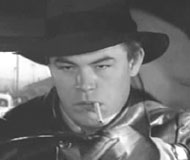


James Cagney in Kiss Tomorrow Goodbye -


Femme fatale Bette Davis in The Letter. She was otherwise a no-
Joe Sawyer is a familiar character actor who appeared in 181 films but surprisingly only 4 true noirs.